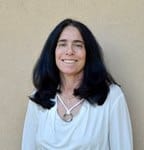The Role of Epidemiology in Equine Practice (AAEP 2011)
- Topics: AAEP Convention, AAEP Convention 2011, Article
"Anecdotal and clinical impressions are appealing but are unreliable sources of information because we often are insufficiently cognizant of the role that chance plays in clinical practice," began Noah Cohen, VMD, MPH, PhD, Dipl. ACVIM, of Texas A&M’s College of Veterinary Medicine. He described the importance of integrating the science of epidemiology into equine practice in his delivery of the Milne State-of-the-Art Lecture to a large audience at the 2011 American Association of Equine Practitioners convention, held Nov. 18-22 in San Antonio, Texas. He added, "It is possible to make errors in clinical judgment based on our impressions or the impressions of others. This is because something good or bad can appear to be the effect of some cause (like a treatment) when it is purely due to chance. Moreover, experts are not always correct, and logical reasoning is not always accurate." Thus, veterinarians need to rely on evidence other than just their clinical impressions and the opinions of experts.
Cohen stressed, "As practitioners, we want to be able to rely on the best available clinical evidence, or so-called evidence-based medicine. This integrates the best research evidence with clinical expertise and our patients’ unique circumstances. Epidemiology is the fundamental underlying science of evidence-based medicine." Cohen informed his audience that the best evidence comes from studying patients with naturally occurring disease, noting that experimental disease rarely mimics natural or spontaneous disease. "And, when making medical decisions about horses," he continued, "a laboratory mouse is not equal to a horse."
Periodically, Cohen handed off the microphone to his friend and colleague, Bo Brock, DVM, who peppered the talk with entertaining allegories that brought home points Cohen had made. Brock described the task before Cohen as daunting: Within a short few hours, he had to teach a subject from the beginning, starting with the basic terminology of epidemiology. By the end of the session, Cohen had achieved this goal by weaving the language of probability and epidemiology into the context of real-life clinical situations
Create a free account with TheHorse.com to view this content.
TheHorse.com is home to thousands of free articles about horse health care. In order to access some of our exclusive free content, you must be signed into TheHorse.com.
Start your free account today!
Already have an account?
and continue reading.

Written by:
Nancy S. Loving, DVM
Related Articles
Stay on top of the most recent Horse Health news with















